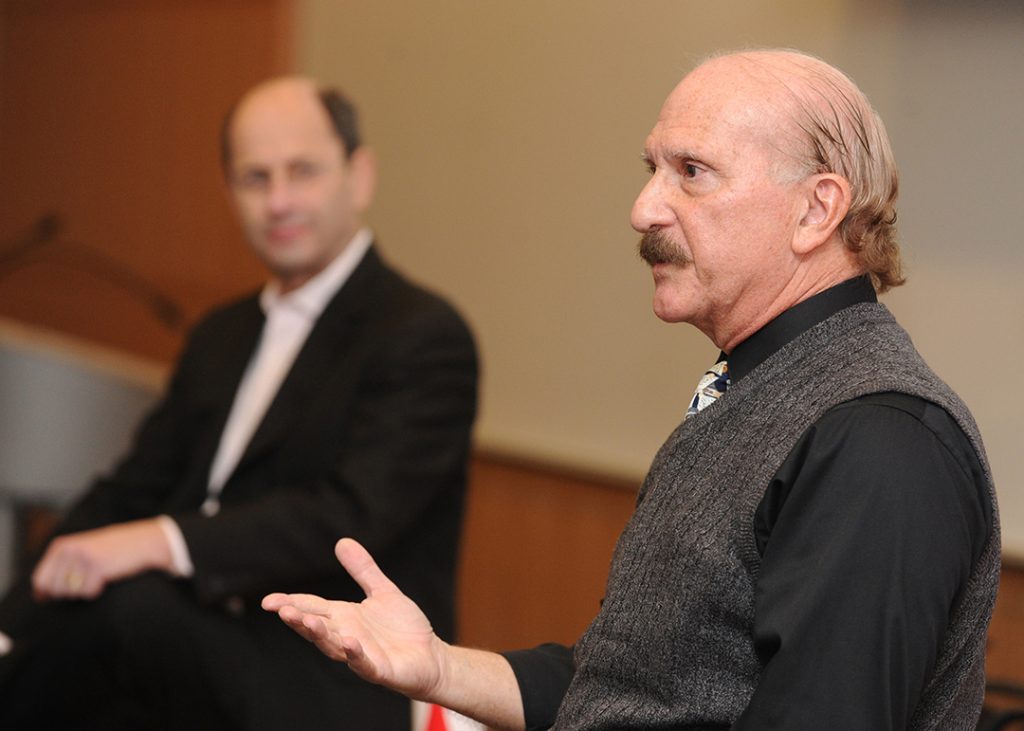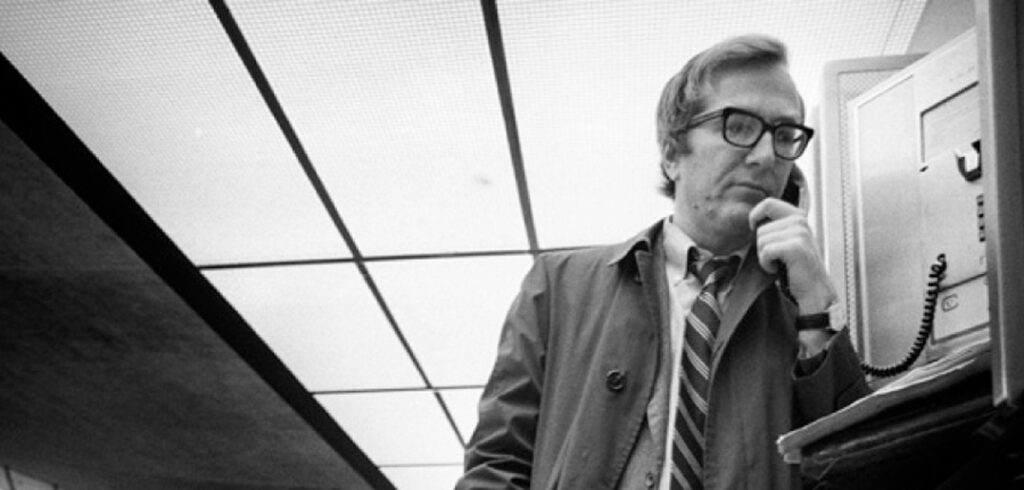
“Anytime someone belched in the city of Chicago they sent someone to cover the belch,” Robert Miraldi, Ph.D., said, referring to investigative journalist Seymour Hersh’s first beat as a reporter for the city’s news bureau.
Miralidi, author of Seymour Hersh: Scoop Artist (Potomac Books, 2013), made the remarks to communications students who attended a ceremony at which he received Fordham’s 2014 Ann M. Sperber Award. His anecdote spoke of an old-school gumshoe reporting style that every cub reporter had to master before moving on to bigger stories.
It also hinted at the colorful language newsrooms were once known for—and that the 77-year-old Hersh was famous for.
Miraldi, a professor of journalism at the State University of New York’s College at New Paltz, said that when he called the legendary journalist to reveal his plans to write the biography, Hersh replied, “I’m not [expletive]dead you know.”
Emerging over the course of the event as a man cut from a similar cloth as his subject, a detail oriented reporter. Miraldi told tales about the sometimes-bellicose Hersh, and in casual aside cited two sources for one particular tale.
He told the story of one U.S. senator who refused to take Hersh’s call. Hersh then told the senator’s secretary to tell the senator that, unless he wanted the affair he was having with a his mistress on the front page of the next day’s paper, he had better pick up. Then, after a beat, Hersh said, “Helloooo, Senator.”
The Sperber prize, presented by the Department of Communication and Media Studies, is given to biographical works that focus on media professionals. It is named in honor of Ann M. Sperber, author of Edward R. Murrow, Murrow: His Life and Times, (Fordham University Press, 1999) and was established with a gift from Sperber’s mother, Lisette.
“To have Fordham as the home for this prize is a great feather in our cap,” said Joseph M. McShane, S.J., president of Fordham. “This is a great book about a great person that shines light on someone of great professionalism.”
While some have questioned Hersh’s methods for getting a story, Pulitzer Prize-winning New York Times journalist John Darton said that Hersh’s “highly developed moral standard” propels him to anger when institutions abuse power.
“If Woodward and Bernstein were Butch Cassidy and the Sundance Kid, then Sy Hersh is Jesse James,” said Darton. “His motto was ‘travel light and ride alone.’”
Hersh began his career in the early 1960s. Miraldi bookends the biography with Hersh’s Pulitzer Prize-winning 1969 freelance coverage of the My Lai Massacre for Dispatch News Service and his 2004 reporting for The New Yorker on the U.S. military’s mistreatment of prisoners at Abu Ghraib.
The My Lai story, which reported that the U.S. military had killed hundreds of South Vietnamese civilians, mostly women and children, helped turn public opinion against the war.
To get the story, Hersh posed as a lawyer to find U.S. army officer William L. Calley at Fort Benning, who was awaiting court marshal for the murders. With more than 100,000 military on the base, finding Calley proved a herculean task. But Miraldi said that the real challenge for Hersh was getting Calley to talk—which he did through a combination of Hersh’s charm, a steak dinner, and bourbon. A drunken Calley told all and Miraldi said Hersh banged out the copy through tears.
Miraldi said that now, more than ever, journalism students should follow Hersh’s unorthodox lead and “uncover the dark deeds” and injustices.
“Sy Hersh can be a difficult man. But this is a man who for 40 years has been fighting injustice. This is a man who for 40 years has been angry. This is a man who for 40 years has been indignant.”
“He once said ‘Do you know what I expect from my country? I expect the same thing that I expect from my family. I expect honesty.’”

